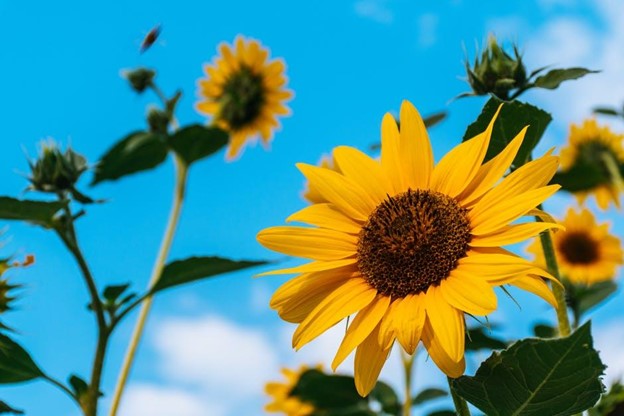Are you planning on revamping your garden and adding some new plants to enhance its beauty? Or are you a beginner gardener looking to create your very first green oasis? Especially with so many options available, selecting the right plants for your garden might seem like a daunting task. But fear not, we have compiled a list of 4 things to keep in mind when choosing plants for your garden.
Water Requirements
In terms of garden care, selecting plants with similar watering needs is one key to success. By grouping plants with high and low water requirements separately, gardeners can conserve water and prevent over or under-watering. A plant that is consistently over or under-watered can develop a variety of problems, from stunted growth to a lack of blooms.
To promote a healthy garden, you need to match each plant’s water requirements with care routines that support its needs. Take hydrangeas, for example. These popular shrubs thrive in moist, well-draining soil, but they can quickly become waterlogged if over-watered. If you want to learn how to care for hydrangeas, make sure to keep their watering needs in mind. You don’t need to be an expert gardener to know when it’s time to water your plants.
Consider Your Climate Zone
Every plant has specific climate zone recommendations, based on factors like temperature extremes and seasonal changes. The United States Department of Agriculture (USDA) Hardiness Zone Map is an excellent resource for identifying your area’s classification.
A plant labeled for USDA Zone 5 might not survive the winter in Zone 4 without special care or protection. Even consider the microclimate of your garden, such as areas that receive more shade or wind, which can also affect plant health and growth. By selecting plants suited for your climate zone, you can save yourself the disappointment of watching them struggle or die.
Assess Light Conditions
The success of a garden depends largely on the amount of sunlight it receives: the intensity, duration, and direction of sunlight can significantly impact the growth and development of plants. For this reason, you need to assess the light conditions in the area where you plan to plant, be it a sunny spot or a shaded corner.
Evaluating sun exposure will help you determine which types of plants will thrive and which ones will struggle. For instance, full-sun plants such as tomatoes, peppers, and petunias require at least 6 hours of direct sunlight per day, while shade-loving plants like ferns and hostas need much less. Keep in mind that light conditions can change throughout the day, so monitor your garden’s sunlight patterns before choosing plants.
Growth Habits and Space
Different species can vary greatly in size, shape, and growth speed, so it’s important to select plants that will fit well in the space you have available, without overcrowding or competing for resources. Some plants, like the fast-growing bamboo, can quickly dominate a garden if not given enough room or properly contained. Similarly, tall plants can inadvertently shade out smaller, sun-loving varieties if not strategically placed. Researching and planning according to the mature size of each plant will ensure that your garden remains healthy, manageable, and aesthetically pleasing for years to come.

Thoughtfully selecting plants for your garden can transform it into a vibrant and thriving ecosystem. By considering water requirements, climate zones, light conditions, and growth habits, you can ensure that your garden flourishes.
Gardening is a process of learning and growth—both for the gardener and the garden. With patience and care, your garden will become a testament to your dedication and love for nature. Happy gardening!
Feature Image source: https://www.pexels.com/photo/sunflowers-1322185/

Recent Comments